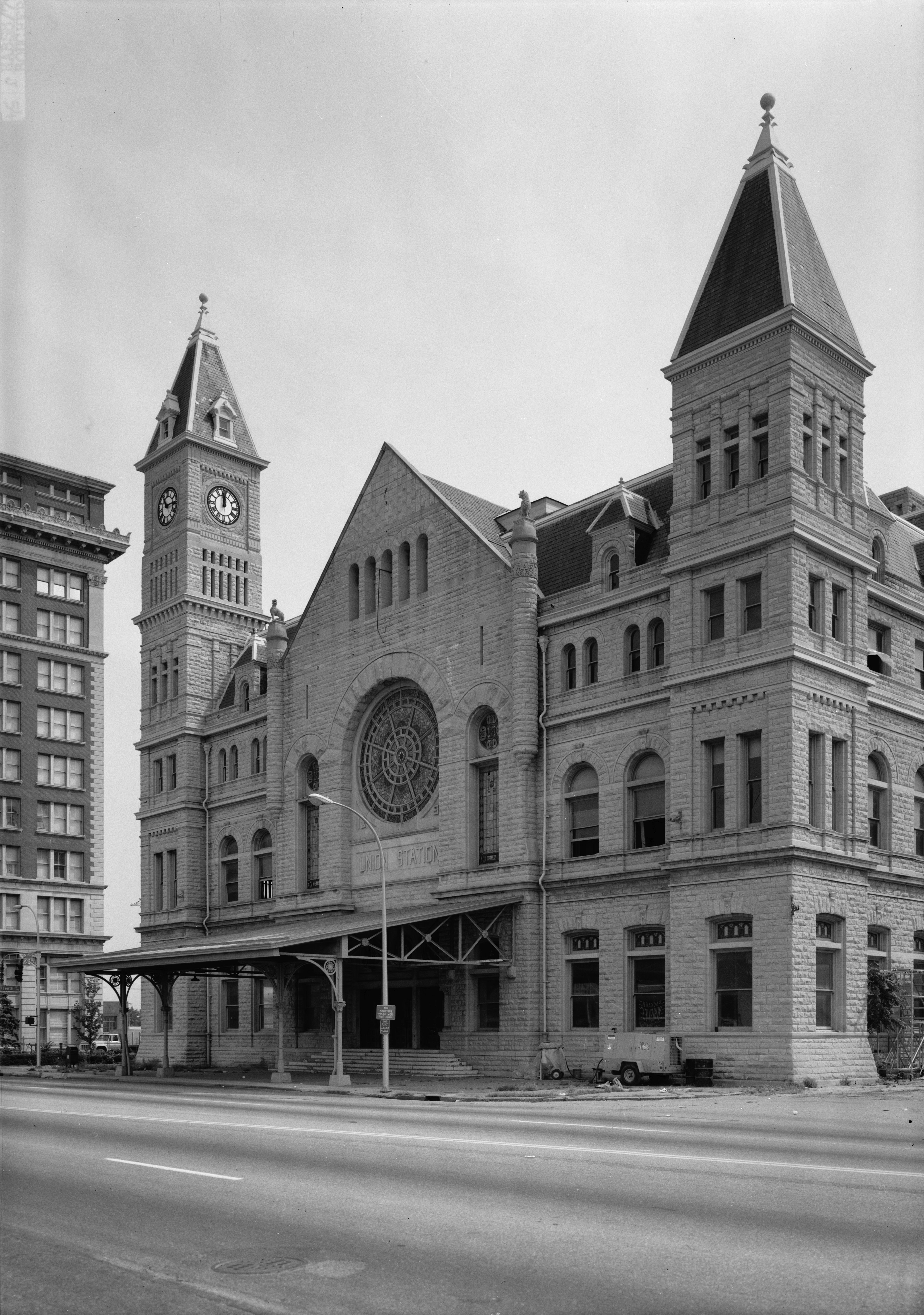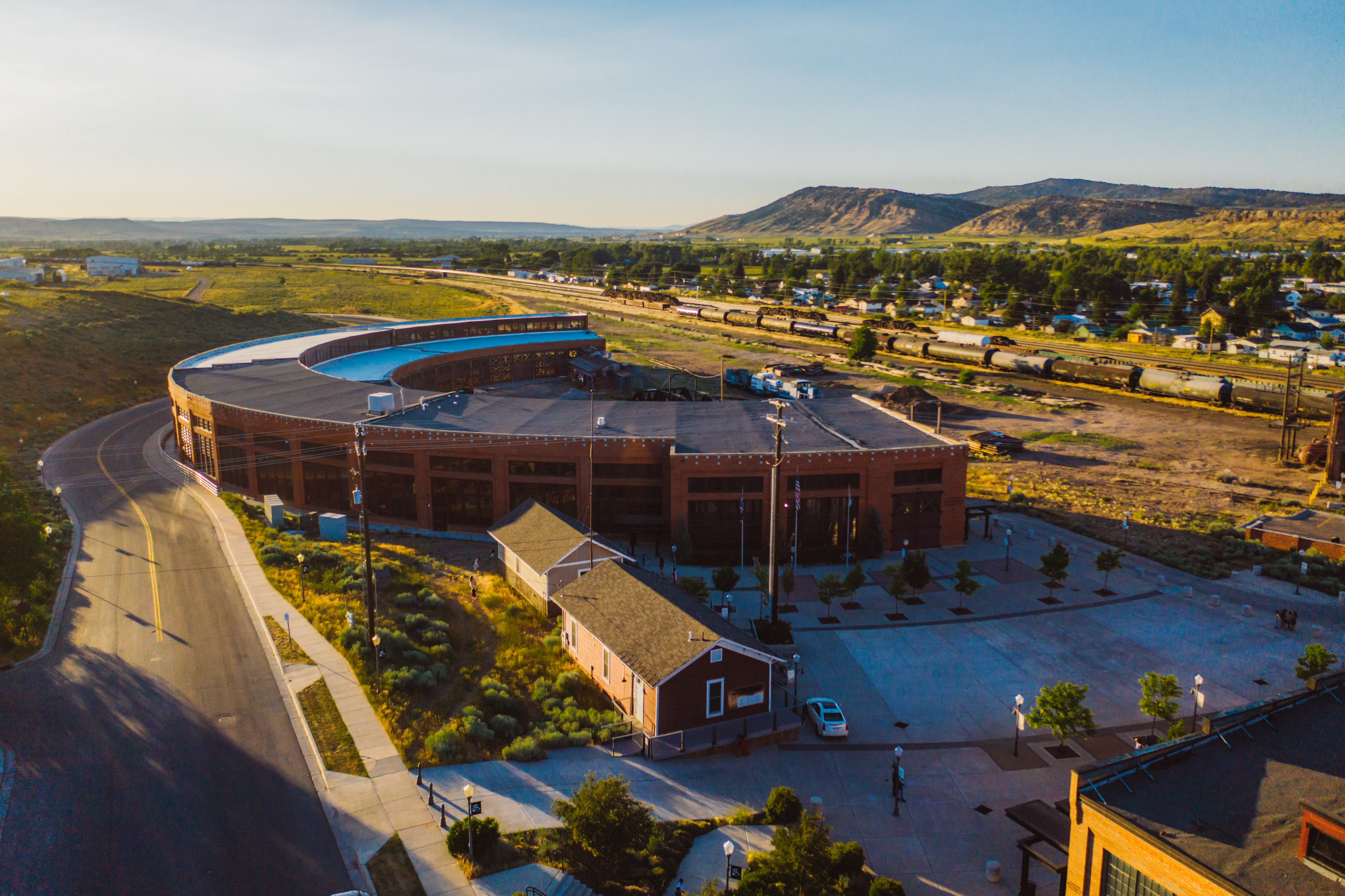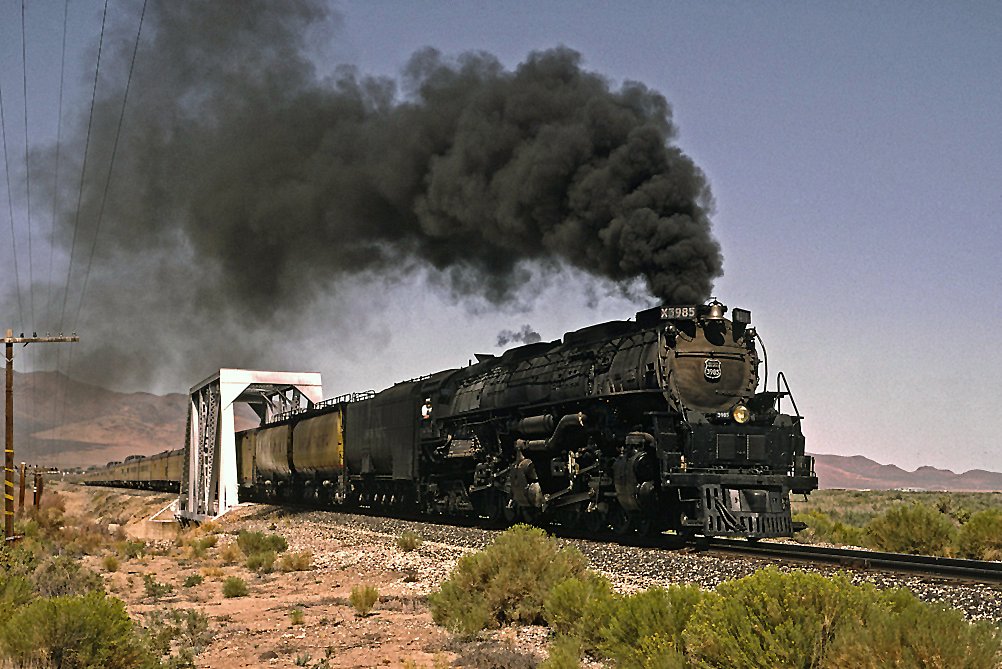|
Wasatch Railroad Contractors
Wasatch Railroad Contractors was a railroad equipment repair business founded in 1999 by John E. Rimmasch in Heber, Utah. The company specialized in historic railcar and steam locomotive repairs, and it employed former Union Pacific Steam manager Steve Lee. The company’s headquarters was relocated to Cheyenne, Wyoming in 2005, and the company subsequently opened a steam locomotive shop and a railcar repair facility in Shoshoni, Wyoming. A string of lawsuits along with a fatal accident at the Shoshoni shop led to the company filing for bankruptcy in late 2021, and it was permanently shut down in early 2022. Wasatch Railroad Contractors and John Rimmasch were charged with fraud due to a mismanaged repair of a passenger coach owned by Steamtown National Historic Site, and were found guilty by a federal jury in April 2022. Founding and operation Wasatch Railroad Contractors was founded by John E. Rimmasch, while he was employed as Chief Mechanical Officer of the Heber Valley Railr ... [...More Info...] [...Related Items...] OR: [Wikipedia] [Google] [Baidu] |
Heber, Utah
Heber City is a city and county seat of Wasatch County, Utah, United States. The population was 11,362 at the time of the 2010 census. It is located 43 miles southeast of Salt Lake City. History Heber City was first settled in 1859 by Robert Broadhead, James Davis, and James Gurr. John W. Witt built the first house in the area. The area was under the direction of Bishop Silas Smith, who was in Provo. In 1860 Joseph S. Murdock became the bishop over the Latter-day Saints in Heber City and vicinity. On May 5, 1899, the Wasatch Wave published this on the 40-year anniversary of Heber, "Forty years ago this week pril 30, 1859 this valley was first settled by a company of enterprising citizens from Provo. This company consisted of John Crook, James Carlile, Jessie Bond, Henry Chatwin, Charles N. Carroll, Thomas Rasband, John Jordan, John Carlile, Wm Giles and Mr. Carpenter, the last five named persons having since died. Forty years ago today, John Crook and Thomas Rasband commenc ... [...More Info...] [...Related Items...] OR: [Wikipedia] [Google] [Baidu] |
Hawaiian Railway Society
The Hawaiian Railway Society is a narrow gauge heritage railroad and railroad museum in Ewa, Hawaii, USA, on the island of Oahu. It uses the trackbed of the defunct Oahu Railway and Land Company. It is currently the only operating railroad museum in the U.S State of Hawaii. History In 1970, Waialua Agricultural Co. said it would scrap its 0-6-2T locomotive No. 6 because rust and deterioration had reduced the engine to an unsightly liability and posed a danger to children who played on it. John Knaus then contacted Bill Paty, then manager of Waialua Agricultural Company, about saving and restoring the locomotive. John then contacted his boss, Captain Henry Davies, of the Naval Ammunition Depot, Lualualei about having the locomotive moved there since it had the only locomotive facility left on Oahu. This was followed by a letter to Ed Bernsten of the National Railway Historical Society seeking information on organizing a local chapter. John received approval to have No. 6 restored ... [...More Info...] [...Related Items...] OR: [Wikipedia] [Google] [Baidu] |
Louisville And Nashville Railroad
The Louisville and Nashville Railroad , commonly called the L&N, was a Class I railroad that operated freight and passenger services in the southeast United States. Chartered by the Commonwealth of Kentucky in 1850, the road grew into one of the great success stories of American business. Operating under one name continuously for 132 years, it survived civil war and economic depression and several waves of social and technological change. Under Milton H. Smith, president of the company for 30 years, the L&N grew from a road with less than of track to a system serving fourteen states. As one of the premier Southern railroads, the L&N extended its reach far beyond its namesake cities, stretching to St. Louis, Memphis, Atlanta, and New Orleans. The railroad was economically strong throughout its lifetime, operating freight and passenger trains in a manner that earned it the nickname, "The Old Reliable." Growth of the railroad continued until its purchase and the tumultuous rail ... [...More Info...] [...Related Items...] OR: [Wikipedia] [Google] [Baidu] |
Evanston, Wyoming
Evanston is a city in and the county seat of Uinta County, Wyoming, United States. The population was 12,359 at the 2010 census. It is located near the border with Utah. History Evanston was named after James A. Evans, a civil engineer for the Union Pacific Railroad. Another source maintains it is named for John Evans, second Governor of the Territory of Colorado. The town was founded during the construction of the First transcontinental railroad. The railroad arrived in the area in November 1868, and Harvey Booth opened a saloon/restaurant in a tent near what is now Front Street. By December the rails had reached Evanston and the first train arrived December 16. However, orders were later handed down by the railroad managers to move the end of the line 12 miles west, to Wasatch. Within three days, most all of Evanston had moved to Wasatch, it appeared that Evanston would become another "end of the tracks" town. Luckily, in June 1869 headquarters returned to Evanston and it ... [...More Info...] [...Related Items...] OR: [Wikipedia] [Google] [Baidu] |
Railway Roundhouse
A railway roundhouse is a building with a circular or semicircular shape used by railways for servicing and storing locomotives. Traditionally, though not always the case today, these buildings surrounded or were adjacent to a turntable. Overview Early steam locomotives normally traveled forwards only. Although reverse operations capabilities were soon built into locomotive mechanisms, the controls were normally optimized for forward travel, and the locomotives often could not operate as well in reverse. Some passenger cars, such as observation cars, were also designed as late as the 1960s for operations in a particular direction. Turntables allowed locomotives or other rolling stock to be turned around for the return journey, and roundhouses, designed to radiate around the turntables, were built to service and store these locomotives. Most modern diesel and electric locomotives can run equally well in either direction, and many are push-pull trains with control cabs at ea ... [...More Info...] [...Related Items...] OR: [Wikipedia] [Google] [Baidu] |
Union Pacific 3985
Union Pacific 3985, also known as the "Challenger", is a four-cylinder simple articulated 4-6-6-4 "Challenger"-type steam locomotive built in July 1943 by the American Locomotive Company (ALCO) of Schenectady, New York, for the Union Pacific Railroad. No. 3985 is one of only two Challengers still in existence and the only one to have operated in excursion service. No. 3985 operated in revenue service until 1957. It was then stored in the roundhouse in Cheyenne, Wyoming, until 1975, when it was placed outdoors beside the Cheyenne depot. In March 1981, after a group of Union Pacific employees restored the locomotive to operating condition, it was placed into excursion service as part of the Union Pacific's heritage fleet and became the world's largest operational steam locomotive. Mechanical problems took it offline in 2010, after which it was stored at the Union Pacific's Steam Shops in Cheyenne. On May 1, 2019, the title of largest operational steam locomotive was passed to t ... [...More Info...] [...Related Items...] OR: [Wikipedia] [Google] [Baidu] |
Union Pacific 844
Union Pacific 844, also known as the "Living Legend", is a class " FEF-3" 4-8-4 " Northern" type steam locomotive owned and operated by the Union Pacific Railroad for its heritage fleet. Built in December 1944 by the American Locomotive Company (ALCO) of Schenectady, New York, No. 844 is one of four surviving FEF Series locomotives and the only one in operation. The locomotive operated in revenue service until 1959. It was stored while awaiting scrapping, along with the rest of the UP steam locomotive fleet. In 1960, railroad leaders recognized the benefits of having a steam program and retained No. 844 for special activities, the kernel of what has become the Union Pacific's heritage fleet. Today, it is one of UP's oldest serving locomotives and the only steam locomotive owned by a North American Class I railroad that has never been retired. History Revenue service In 1944, Union Pacific and the American Locomotive Company (ALCO) collaborated on the FEF-3, a class of ... [...More Info...] [...Related Items...] OR: [Wikipedia] [Google] [Baidu] |
Tender (rail)
A tender or coal-car (US only) is a special rail vehicle hauled by a steam locomotive containing its fuel (wood, coal, oil or torrefied biomass) and water. Steam locomotives consume large quantities of water compared to the quantity of fuel, so their tenders are necessary to keep them running over long distances. A locomotive that pulls a tender is called a tender locomotive. Locomotives that do not have tenders and carry all their fuel and water on board the locomotive itself are called tank locomotives. A corridor tender is a locomotive tender with a passageway to one side, allowing crew changes on the fly. A brake tender is a tender that is heavy and used (primarily) to provide greater braking efficiency. General functions The largest steam locomotives are semi-permanently coupled by a drawbar to a tender that carries the water and fuel. The fuel source used depends on what is economically available locally. In the UK and parts of Europe, a plentiful supply of coal made ... [...More Info...] [...Related Items...] OR: [Wikipedia] [Google] [Baidu] |
Kenefick Park
Kenefick Park is located at 100 Bancroft Street in South Omaha, Nebraska, next to the Lauritzen Gardens, Omaha's botanical gardens. Kenefick Park features "two of the greatest locomotives ever to power Union Pacific Railroad": EMD DDA40X #6900,the first of the class, and Union Pacific Big Boy #4023. About Sitting at the southwest point of the Lauritzen Gardens property along Interstate 80, the park welcomes motorists to Nebraska. It features a display of Union Pacific Big Boy #4023 and Union Pacific Centennial #6900 locomotives. Kenefick Park was relocated in 2004 from Abbott Drive north of downtown to its current location in order to accommodate the CenturyLink Center Omaha. It is named in honor of former Union Pacific Chairman and CEO John Kenefick John is a common English name and surname: * John (given name) * John (surname) John may also refer to: New Testament Works * Gospel of John, a title often shortened to John * First Epistle of John, often shortened to ... [...More Info...] [...Related Items...] OR: [Wikipedia] [Google] [Baidu] |
Union Pacific 4023
Union Pacific 4023 is a preserved member of the 4-8-8-4 Big Boy class built by the American Locomotive Company in Schenectady, New York in November 1944. It is one of eight surviving UP Big Boys being preserved across the United States. 4023 also has the distinction of being the only surviving Big Boy that was part of the second group built in 1944, as all the other surviving Big Boys are from the first group built in 1941. History In the early 1940s, the Union Pacific Railroad designed the only simple articulated steam locomotive with a 4-8-8-4 wheel arrangement, which would be known as the "Big Boy" and would be the largest steam locomotive in the world. These locomotives began being constructed in 1941 by the American Locomotive Company in Schenectady, New York, and No. 4023 is one of the last five of these built in 1944. No. 4023 was assigned for fast and heavy freight trains through the Wasatch Mountains and over Sherman Hill. After its last run took place in 1959, No ... [...More Info...] [...Related Items...] OR: [Wikipedia] [Google] [Baidu] |
Union Pacific Big Boy
The Union Pacific Big Boy is a type of simple articulated 4-8-8-4 steam locomotive manufactured by the American Locomotive Company (ALCO) between 1941 and 1944 and operated by the Union Pacific Railroad in revenue service until 1962. The 25 Big Boy locomotives were built to haul freight over the Wasatch Range between Ogden, Utah, and Green River, Wyoming. In the late 1940s, they were reassigned to Cheyenne, Wyoming, where they hauled freight over Sherman Hill to Laramie, Wyoming. They were the only locomotives to use a 4-8-8-4 wheel arrangement: four-wheel leading truck for stability entering curves, two sets of eight driving wheels and a four-wheel trailing truck to support the large firebox. Today, eight Big Boys survive, with most on static display at museums across the USA. One of them, No. 4014, was re-acquired by Union Pacific, and between 2014 to 2019 it was rebuilt to operating condition for the 150th anniversary of the first transcontinental railroad. It thus regained ... [...More Info...] [...Related Items...] OR: [Wikipedia] [Google] [Baidu] |
Black Canyon Of The Gunnison National Park
Black Canyon of the Gunnison National Park is an American national park located in western Colorado and managed by the National Park Service. There are two primary entrances to the park: the south rim entrance is located east of Montrose, while the north rim entrance is south of Crawford and is closed in the winter. The park contains of the long Black Canyon of the Gunnison River. The national park itself contains the deepest and most dramatic section of the canyon, but the canyon continues upstream into Curecanti National Recreation Area and downstream into Gunnison Gorge National Conservation Area. The canyon's name owes itself to the fact that parts of the gorge only receive 33 minutes of sunlight a day, according to ''Images of America: The Black Canyon of the Gunnison''. In the book, author Duane Vandenbusche states, "Several canyons of the American West are longer and some are deeper, but none combines the depth, sheerness, narrowness, darkness, and dread of the Black Ca ... [...More Info...] [...Related Items...] OR: [Wikipedia] [Google] [Baidu] |
.jpg)





